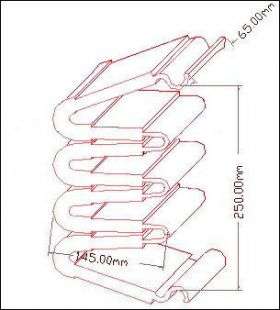Cambridge researcher creates revolutionary vehicle suspension design

A new form of suspension that promises to revolutionise the experience of people who drive heavy goods vehicles has been designed by a Cambridge academic.
The novel E-shaped suspension will enhance driver control, improve comfort and increase safety. It will also reduce fuel consumption and cut the cost of fitting specialist equipment to vehicles so that they can cope with different loads.
At the moment, commercial and heavy good vehicles need to have their suspension fine-tuned in accordance with the load they are carrying, so that drivers can control them.
For example, a vehicle with soft suspension is suitable for light loads, but becomes difficult to control if it has to carry extra weight. On the other hand, giving a vehicle hard suspension can make it easy to handle with a heavy load, but the driver and passengers will be in for a bumpy ride once the load is removed.
PhD researcher Salah Elmonselhy, from the Department of Engineering at the University of Cambridge, has proposed an E-shaped suspension design that gets around the problem by using two springs instead of the single spring used in standard suspension.
The springs are placed opposite to one another, but can work together when needed. The first operates under light loads, while the second is more tightly set, so that it provides greater stiffness only when the weight of the vehicle’s load is heavier. As a result, the vehicle’s suspension adjusts itself, according to the vehicle’s needs.
“Suspension is an ongoing problem for commercial and heavy goods drivers as it can’t always be tuned to a level that balances control, comfort and safety,” Salah said.
“This innovation will give drivers more control over their vehicles whatever the weight the suspension has to bear. The good news is that no extra tuning will be required due to the E-shape.”
During driving, the vehicle’s suspension is also pushed or pulled by other forces which are created by braking, cornering and acceleration. Salah’s proposed idea is so flexible that with a few additions, the suspension is not affected by these forces.
Salah Elmonselhy has already received an international honour from the Society of Automotive Engineers (SAE), in recognition of his “E-springs” invention. The Society of Automotive Engineers is the world premier society for advancing mobility in Land, Sea, Air, and Space.
For a demonstration of how the suspension works please follow the link: www.eng.cam.ac.uk/news/stories … ing/animation_03.avi
Source: Cambridge University





















